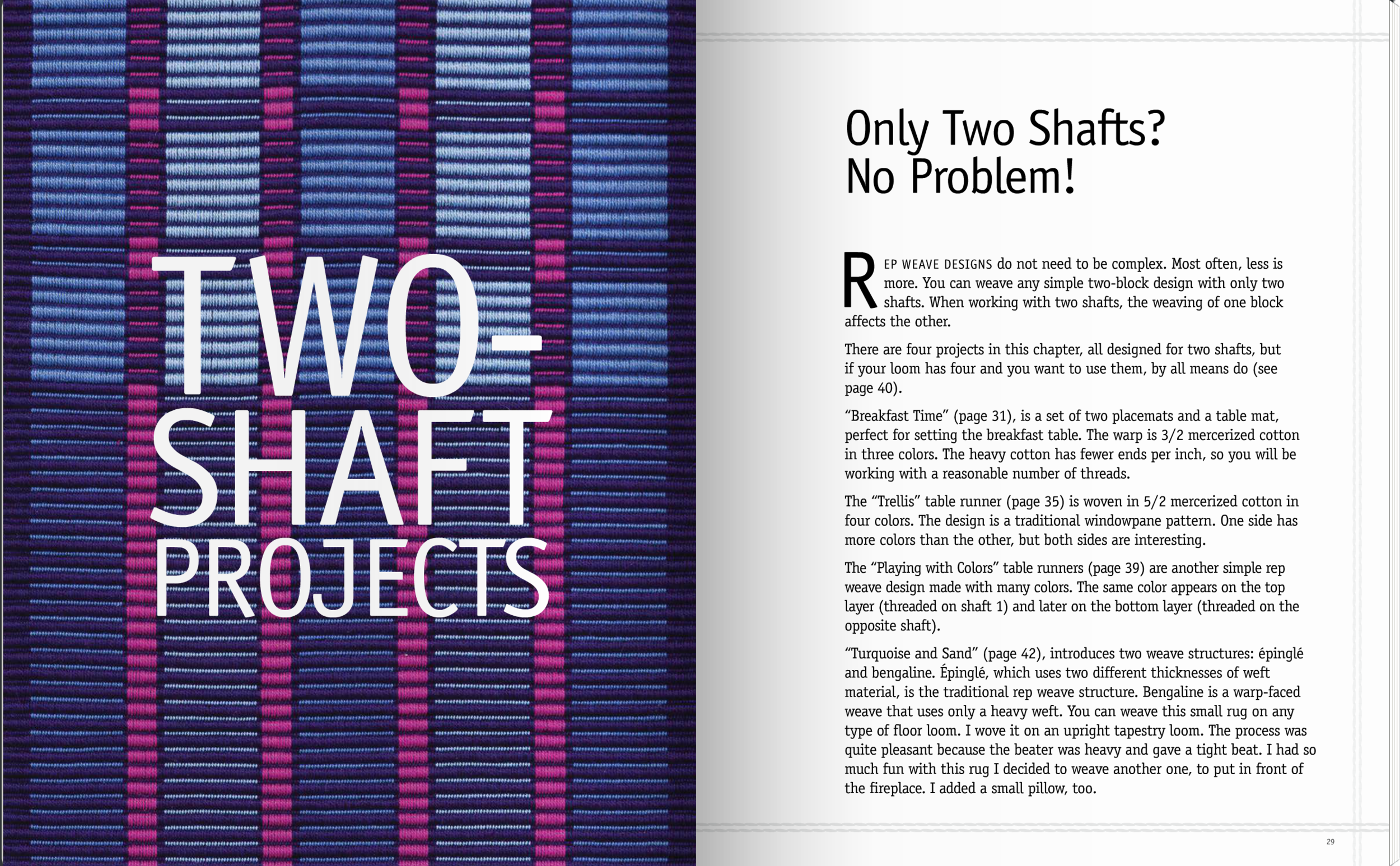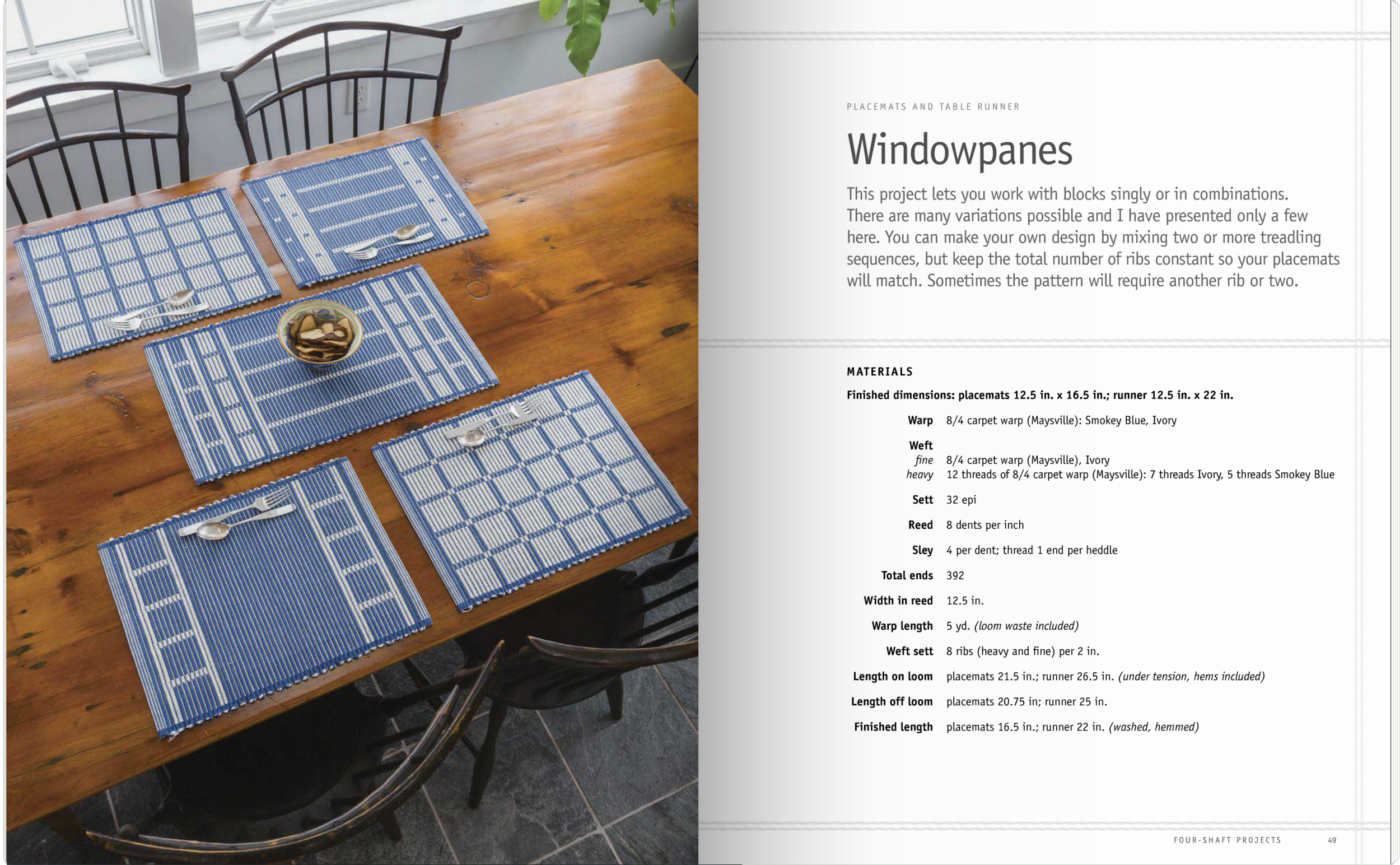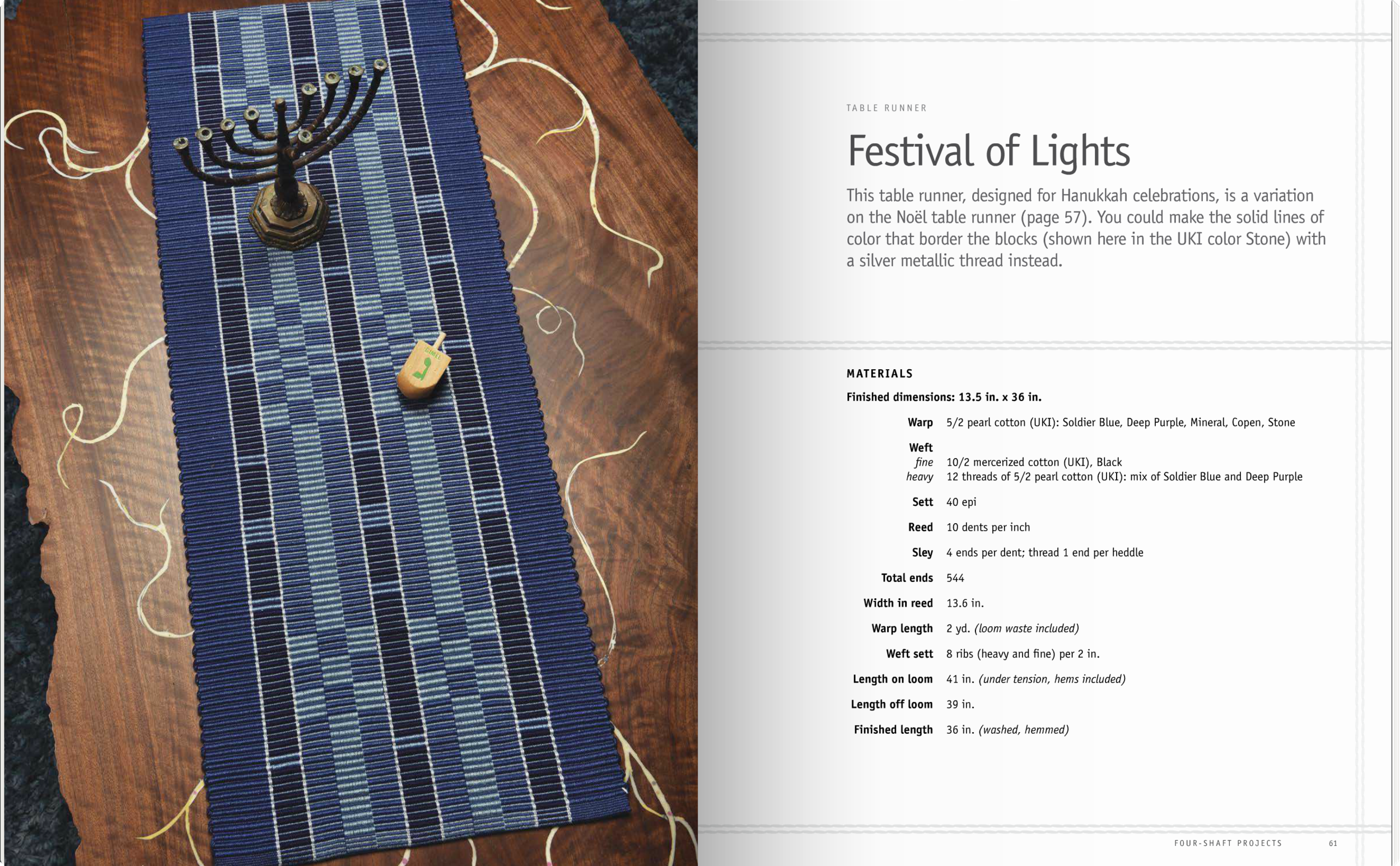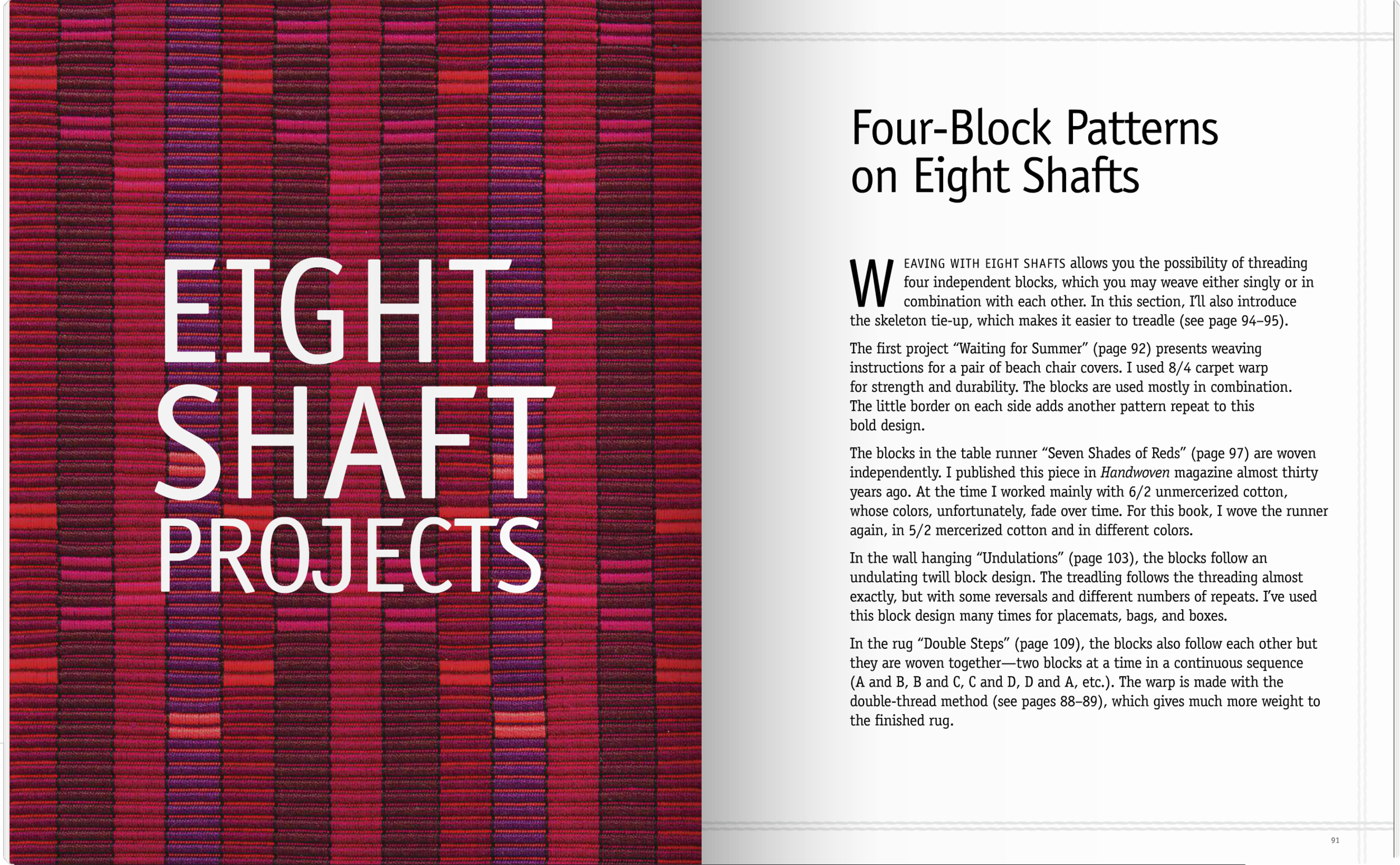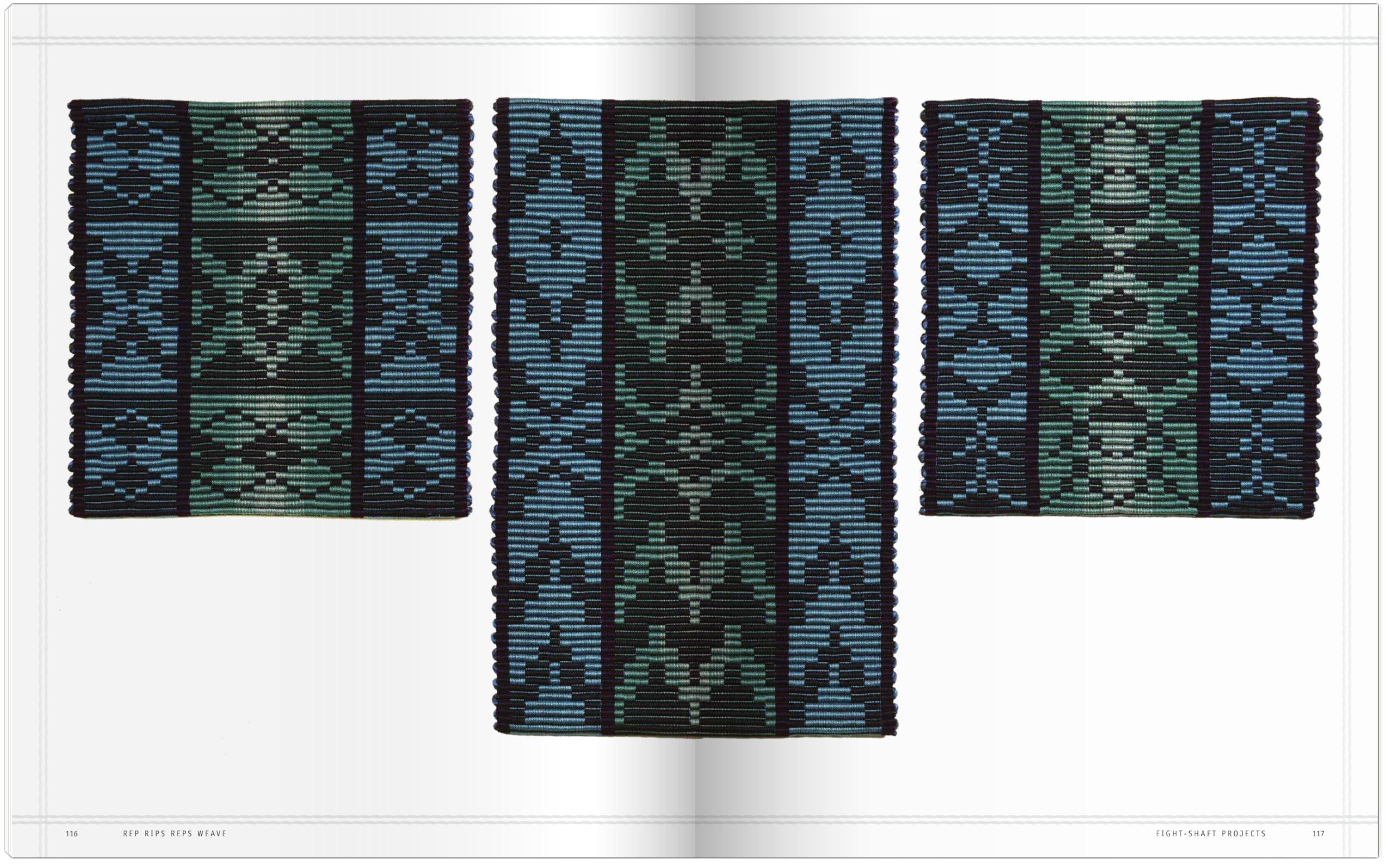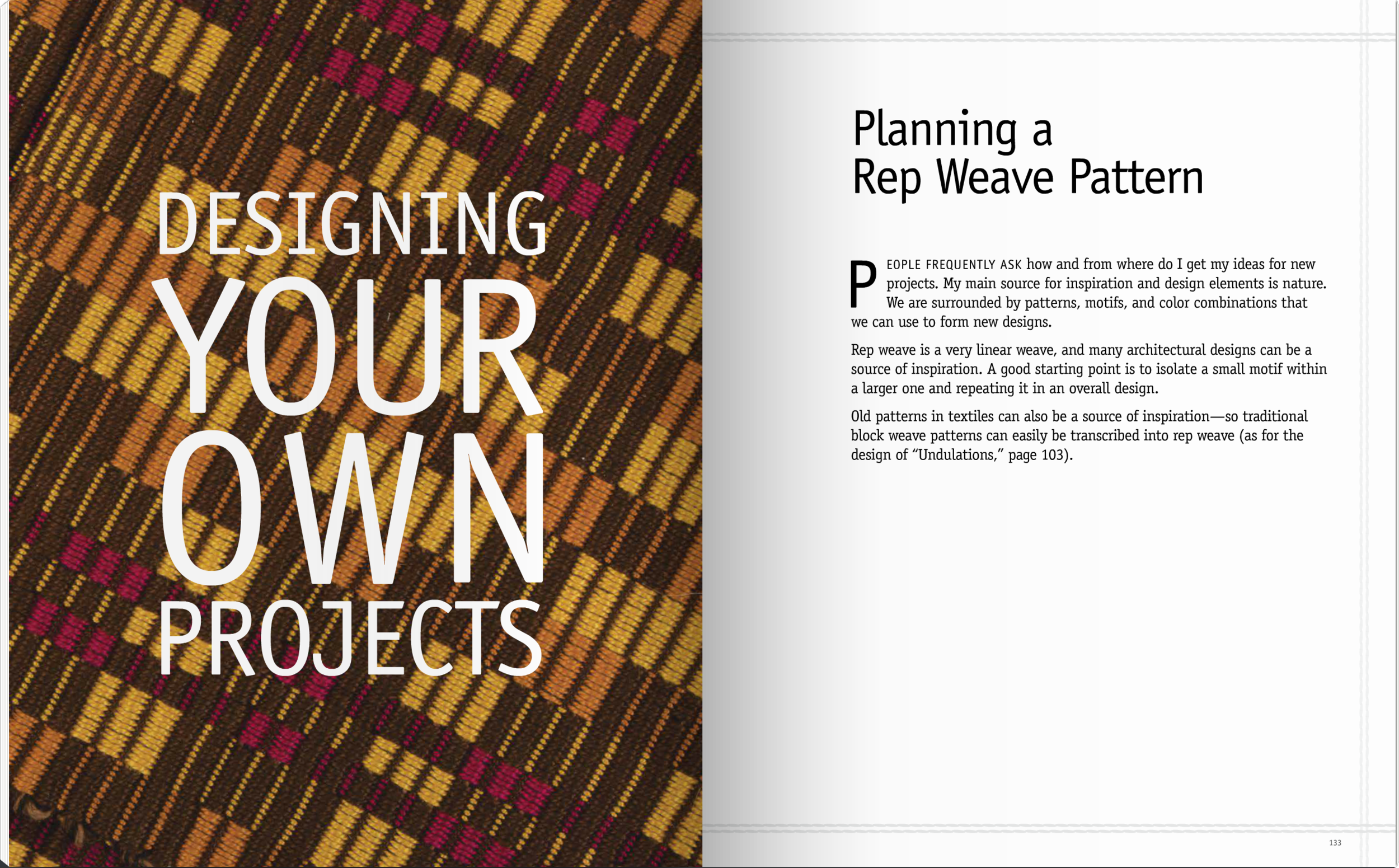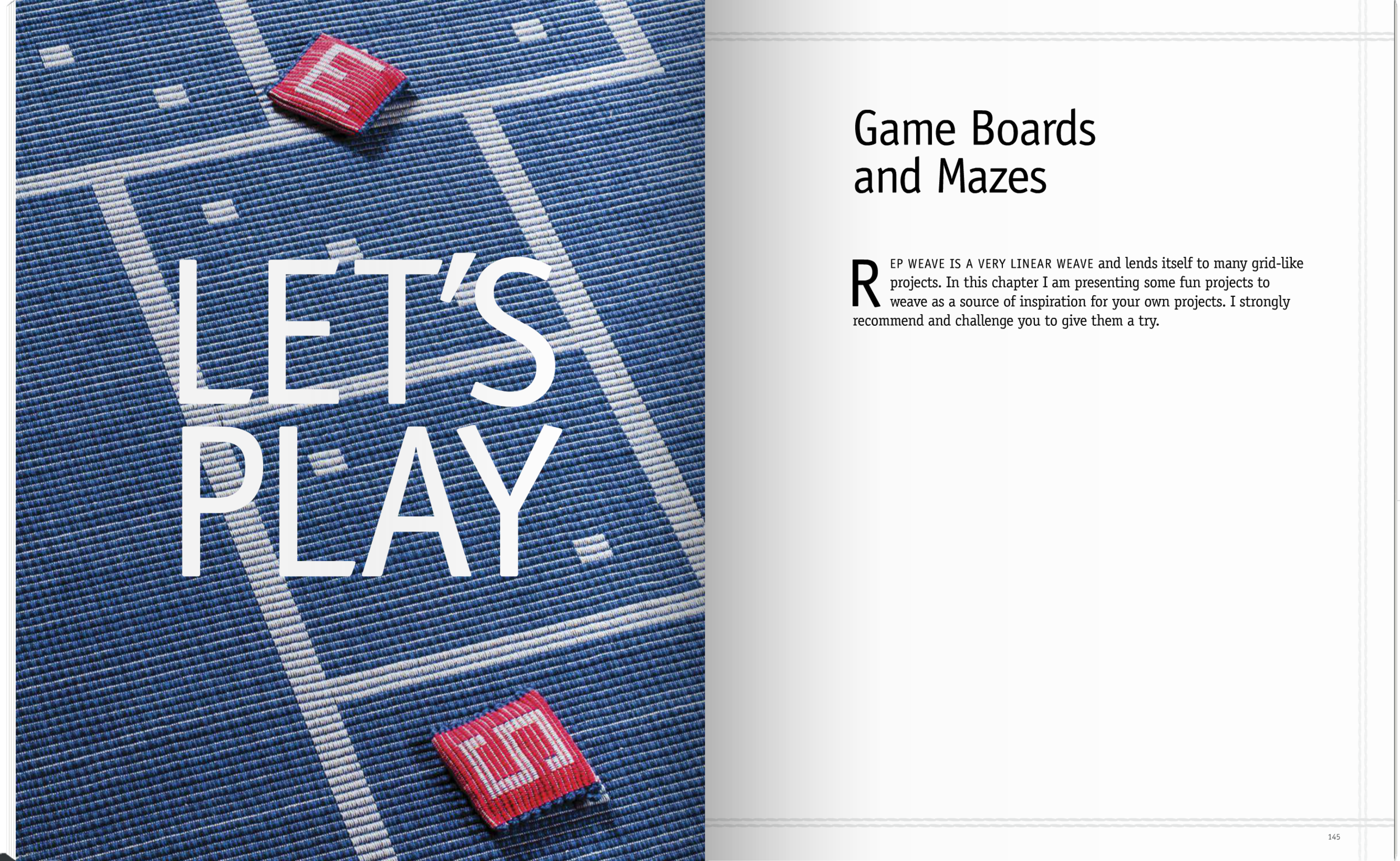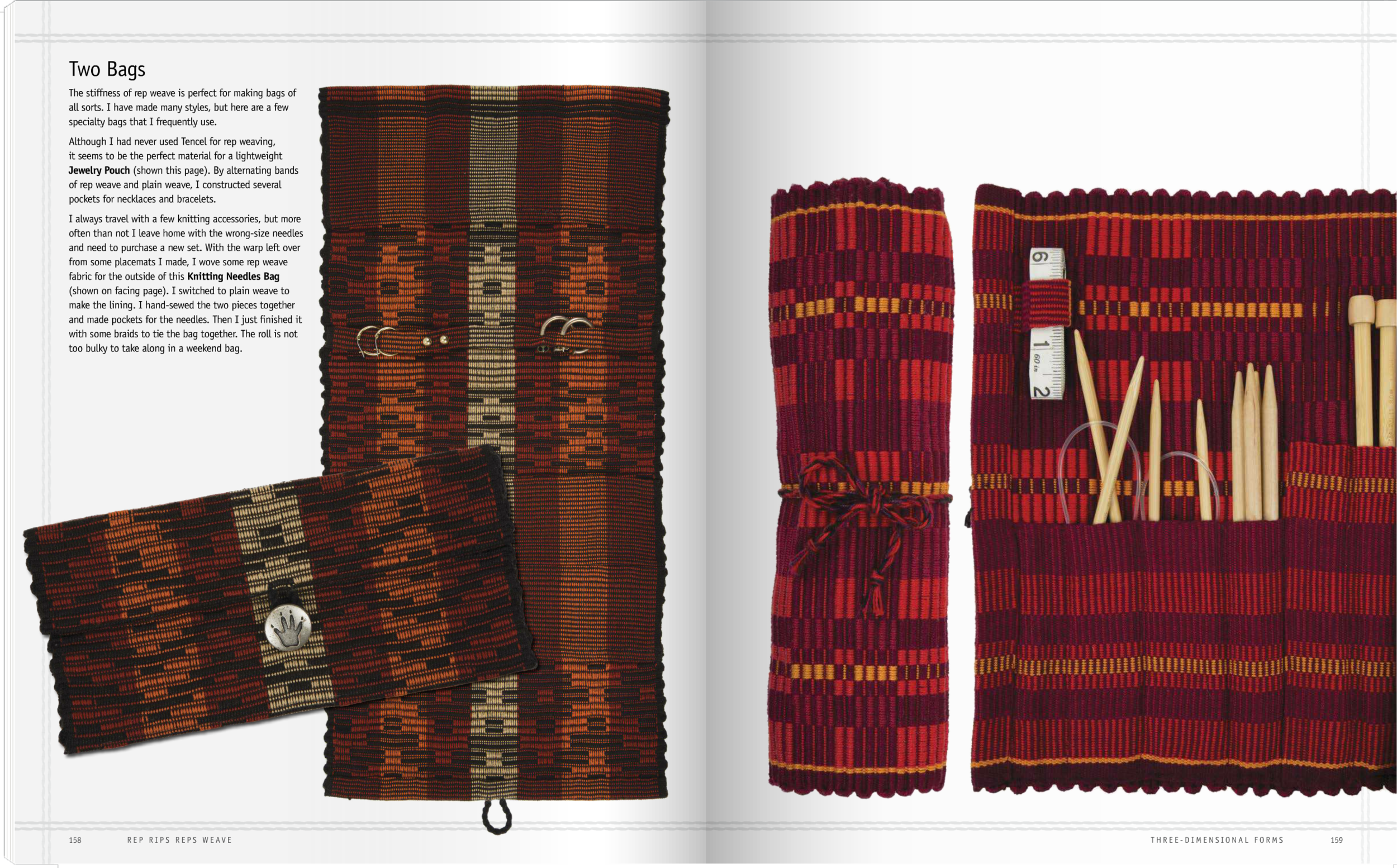
It’s Here!
172 pages, 8" x 10"
ISBN 978–0–615–33674–9
In Rep, Rips, Reps Weave, author Lucienne Coifman takes weavers beyond the traditional forms and familiar patterns. She provides complete drafts and full instruction for more than 20 of her stunning project designs—rugs, placemats, runners, wall hangings, and samplers.
Rep, Rips, Reps is a complete workshop in rep weaving—for both the beginning and advanced weaver. Lucienne shares the proven tips and techniques she has developed through years of teaching. There’s also a photo gallery of games, mazes, and 3-D forms to inspire you to have fun and experiment on your own.
Thank you for your support and interest in Lucienne's book!
For U.S. sales. please use the Purchase button.
For foreign sales, click here.
If you prefer to mail in your payment, please send me the following information with your check:
No. of books x $41.95
Add $3.50 per book for shipping
Please mail to:
Lucienne Coifman
200 Leeder Hill Dr., Apt 2607, Hamden, CT 06517
If you wish to purchase in bulk, please send me an email requesting pricing information.
Thank you for your order, I hope you enjoy the book and happy weaving!
Read what the experts are saying
Linda Ligon
Founder of Interweave Press and Thrums Books
“Take a simple plain weave draft, crowd the warp ends together, use a fine weft and a heavy one—and the result is a sturdy, durable fabric with a look all its own and endless design possibilities.
“In Rep, Rips, Reps Weave, Lucienne Coifman explores this weave with clarity and creativity, making it accessible to a novice weaver and intriguing to the more experienced.
“From the simplest two-block-on-two-shaft design to the endless variations of eight blocks on eight shafts, the explanations are clear, the hints and know-how helpful, and the projects both handsome and provocative.
“Clean layout, beautiful photography, and careful writing and editing make this a classic worthy of any weaver’s library. Rep weave deserves to be used more often than it is in the United States, and Coifman’s book leads the way.”
Jean M. Scorgie
Former editor of Handwoven magazine and creator and publisher of Weaver’s Craft
“Presented as elegantly as they are designed, Lucienne Coifman’s striking collection of architectural designs shows an innovative approach to handwoven rep textiles for the home. With complete directions for weaving each design, projects range from placemats and runners to wall hangings and rugs, with several small three-dimensional projects for good measure. Using easily available pearl cotton in a wide range of colors, Rep, Rips, Reps Weave sets a high standard of design and craftsmanship.”
A Look Inside
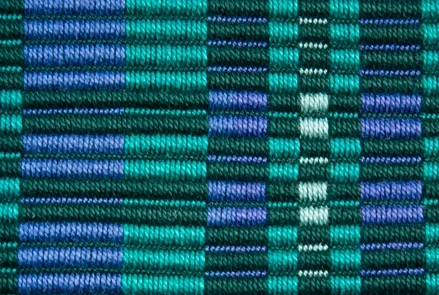
Rep, Rips, Repp, Reps
In English, the technique of rep weaving is known as rep or repp. The word may be a corruption of the word “rib,” which is a characteristic of the fabric. In French, the method is called reps—another possible source of the English term. In Sweden, the technique is called rips.
The Swedish word ripsmatta is sometimes mistakenly used to refer to rep weaving. Ripsmatta is not a technique—the word simply means “a rug or mat that has been made with rep weave.”

